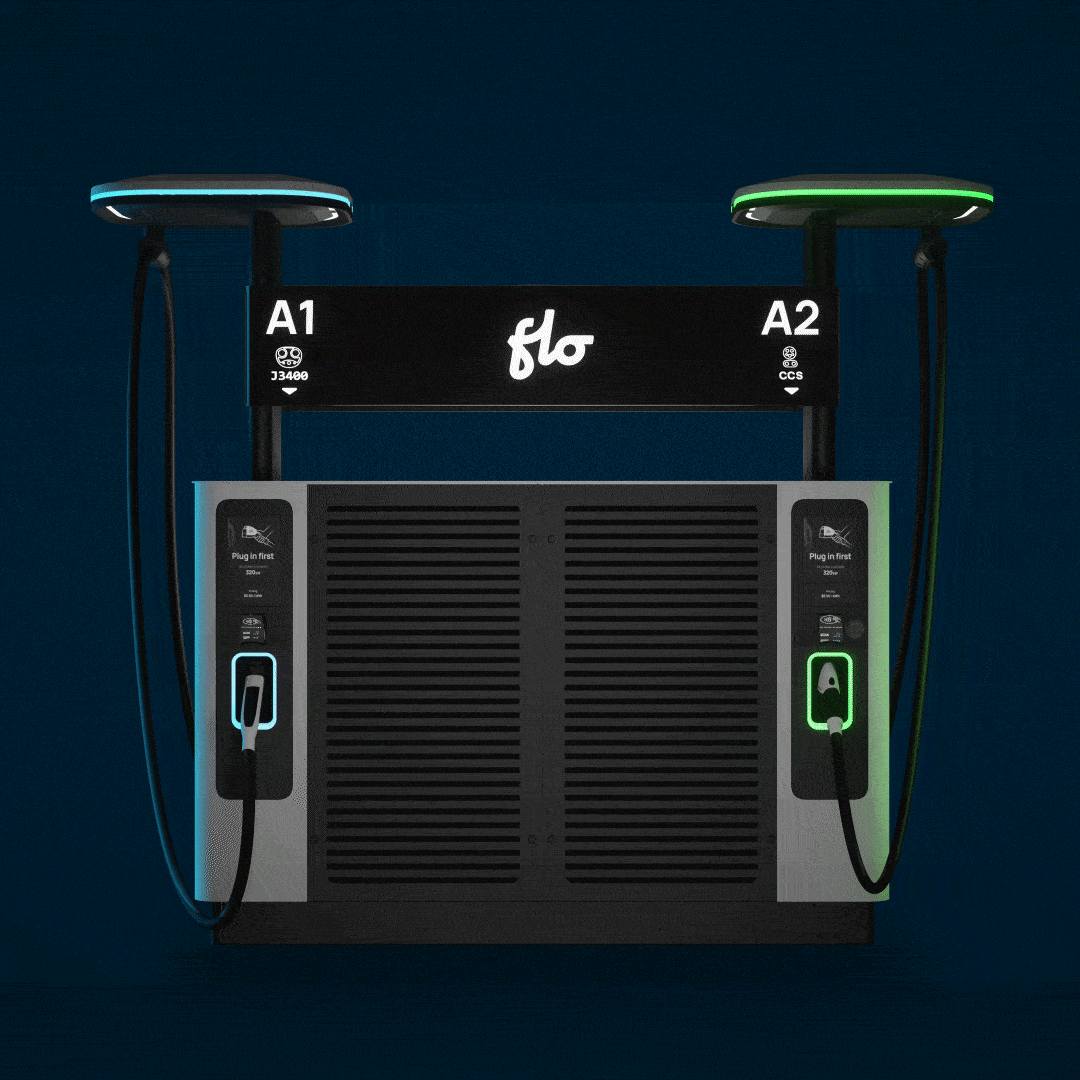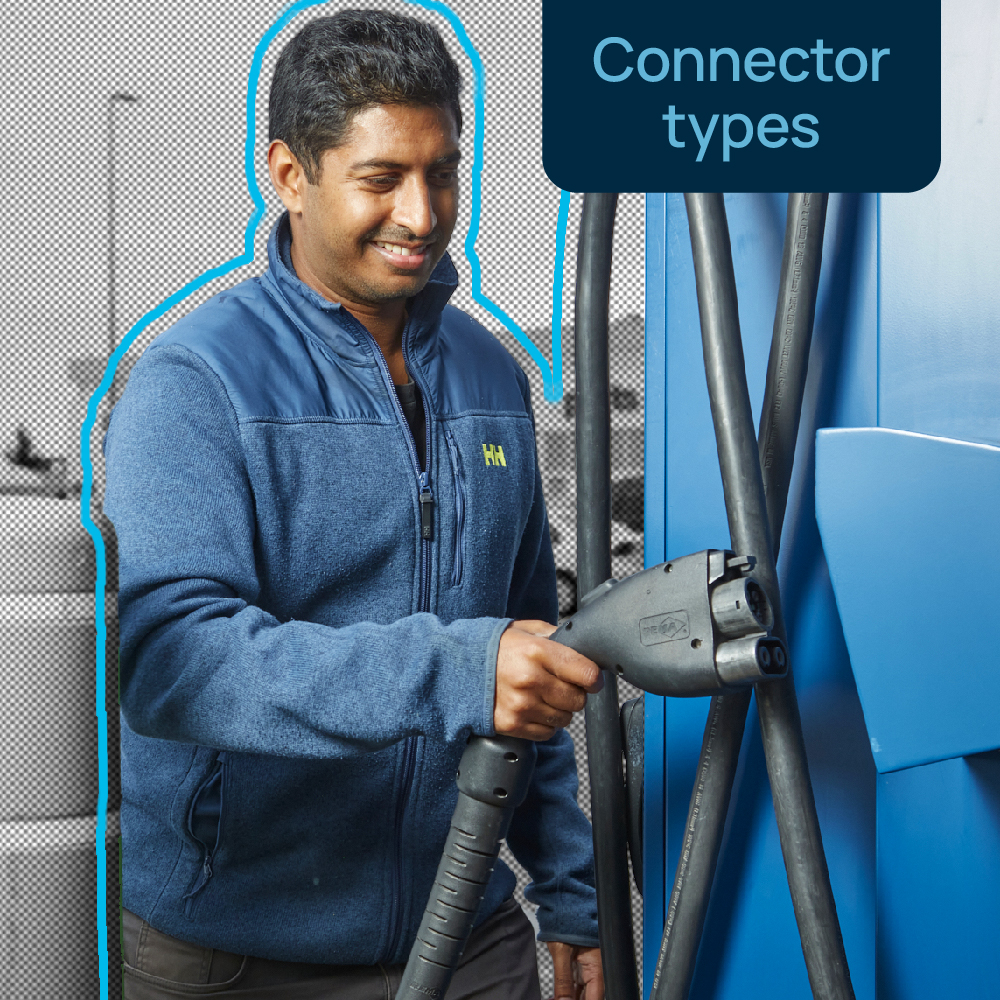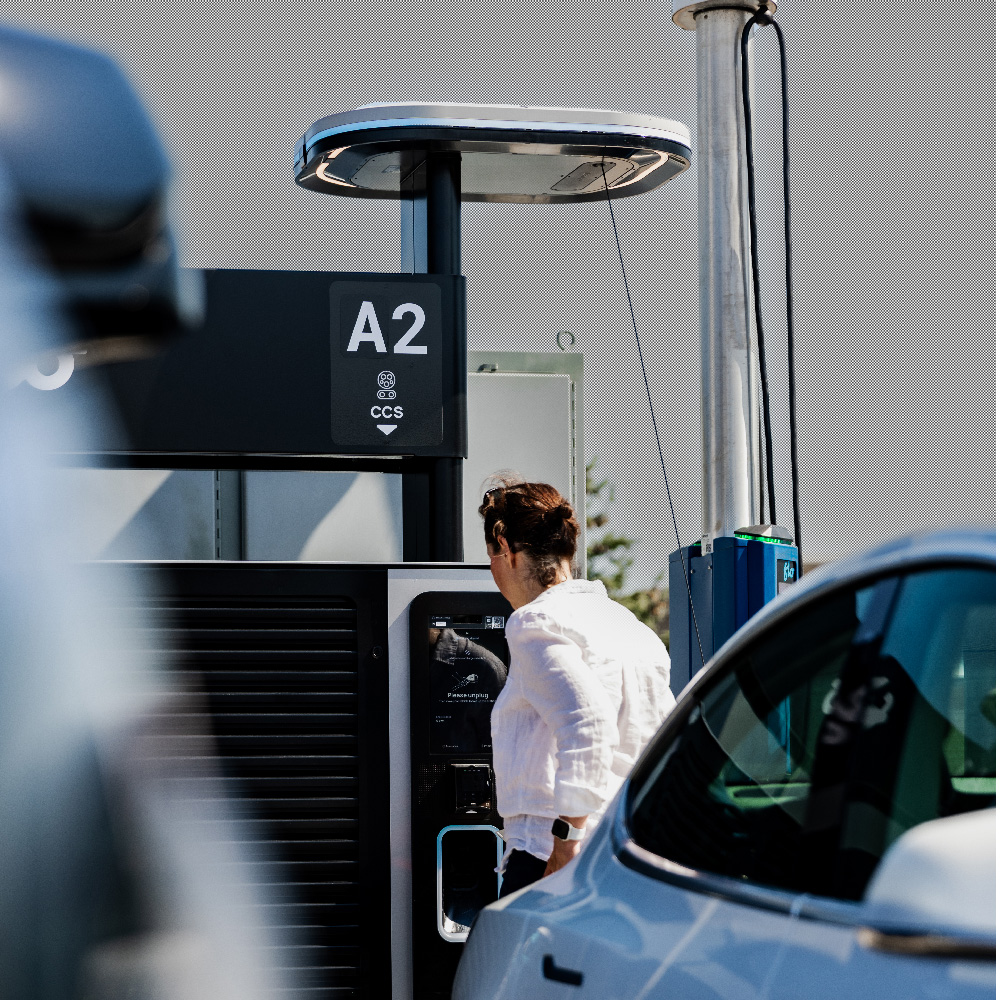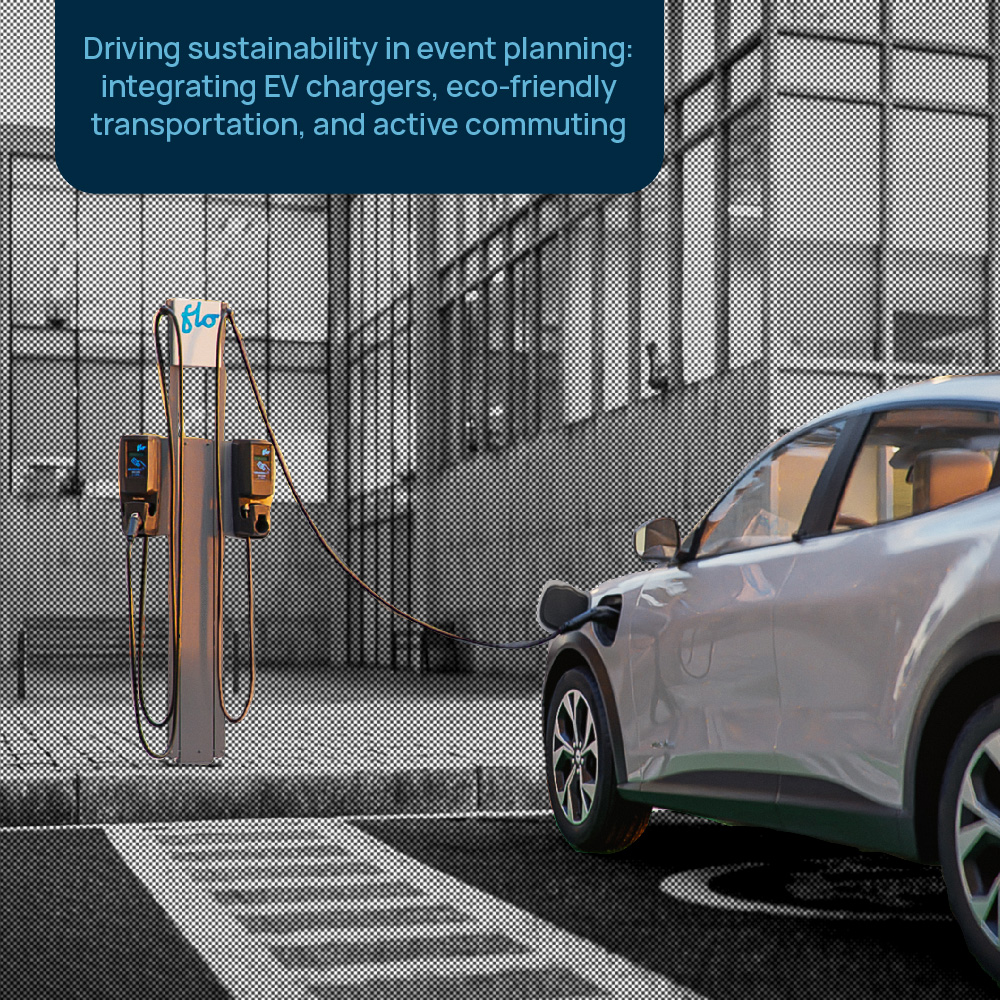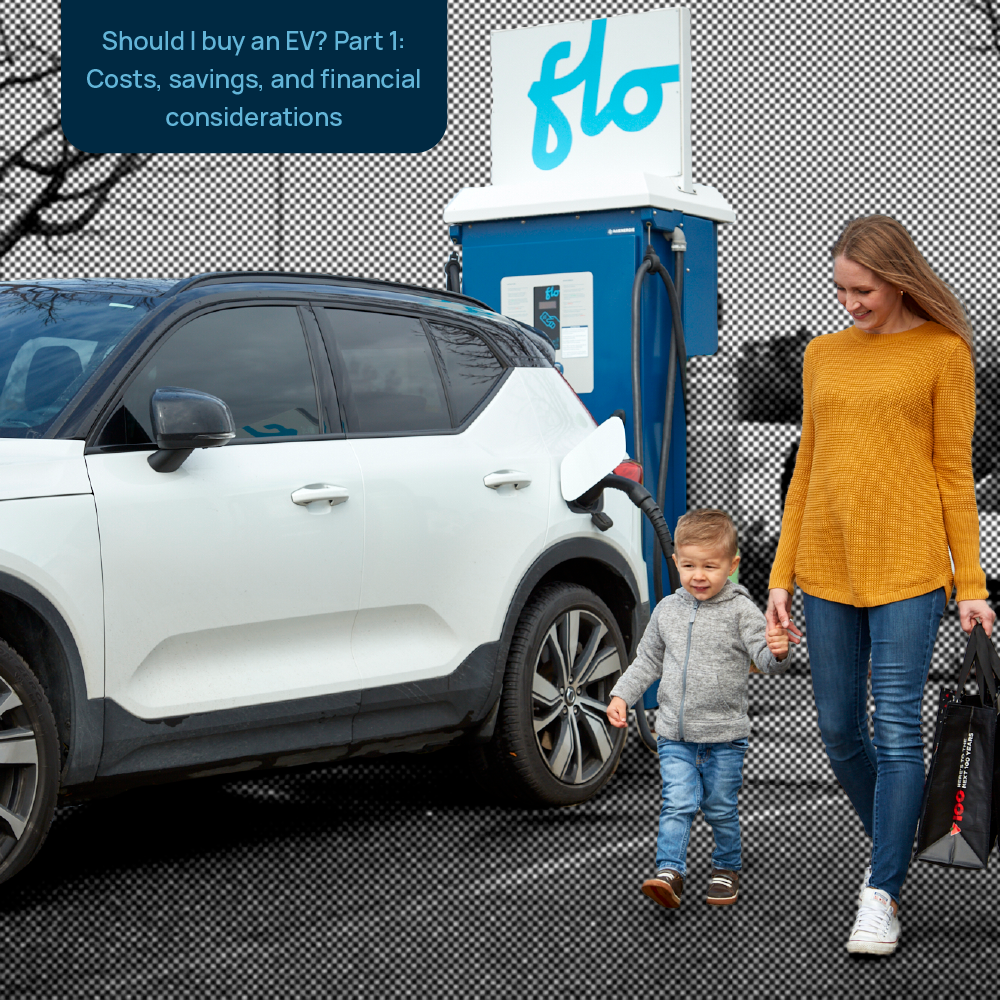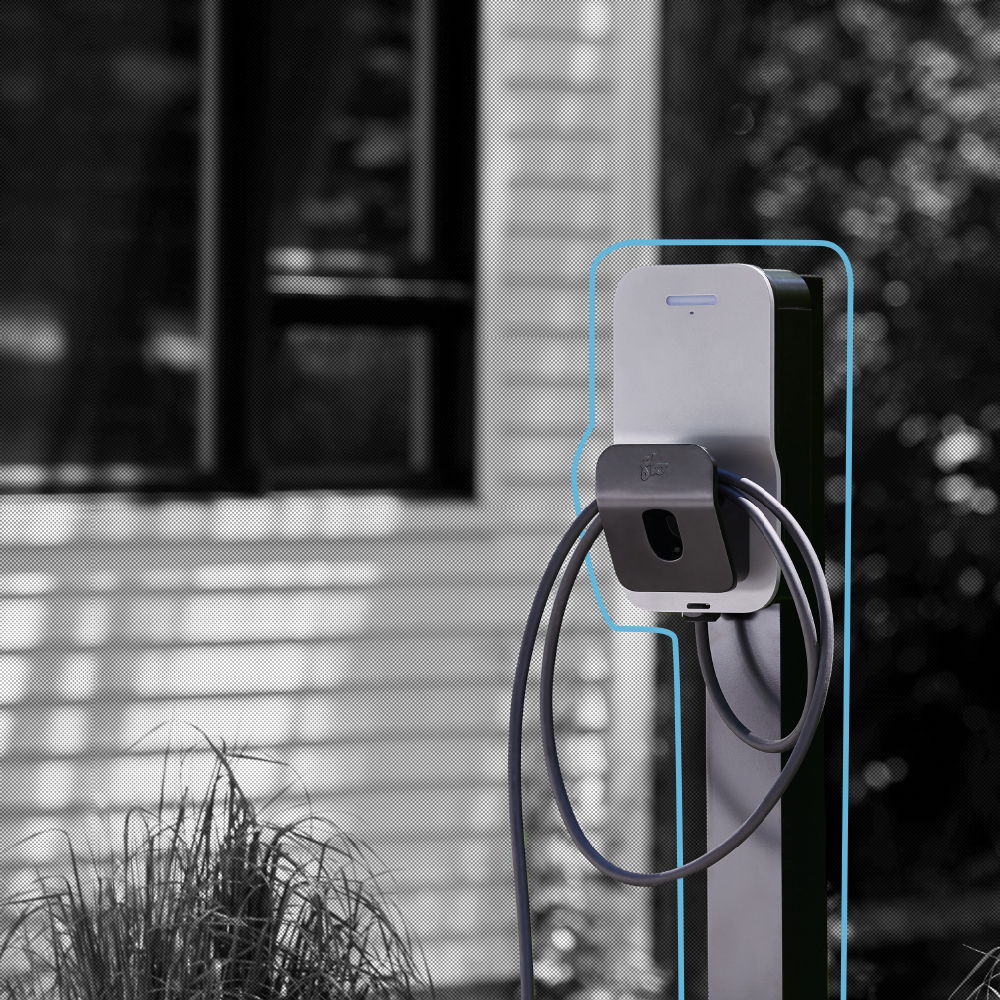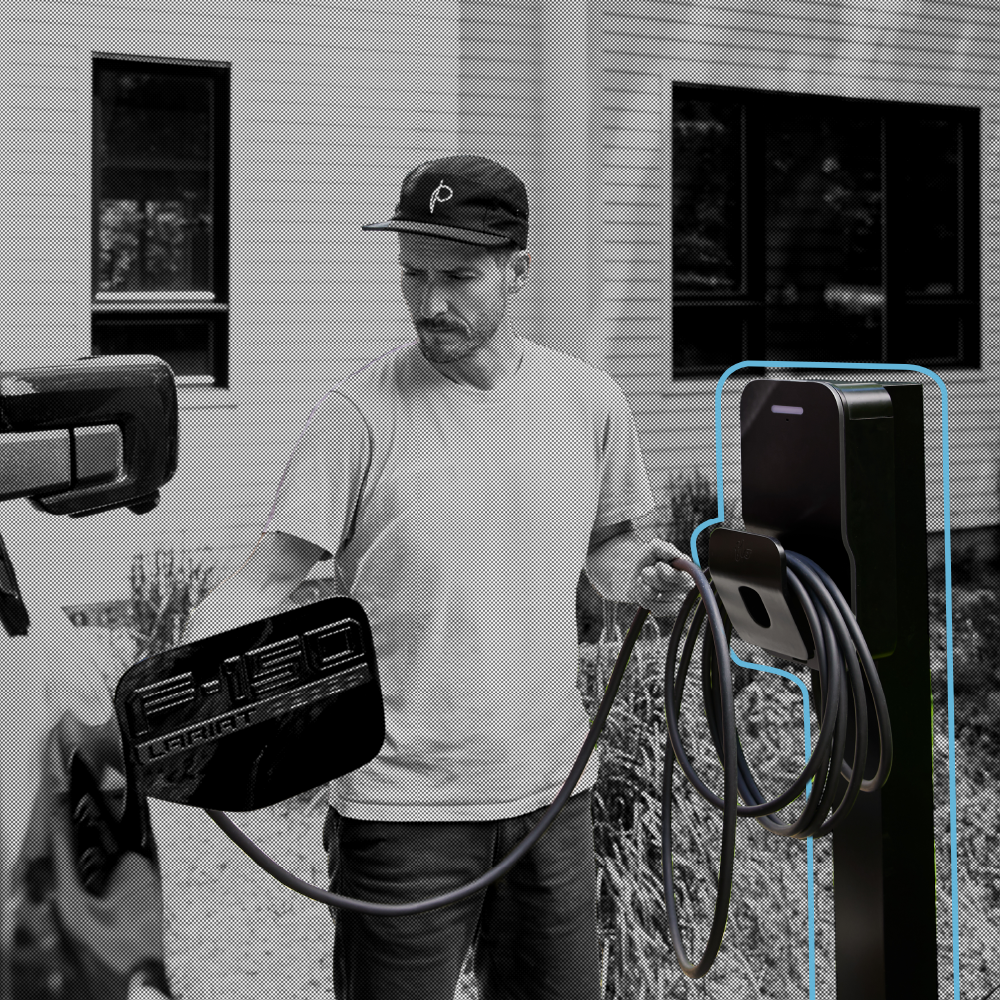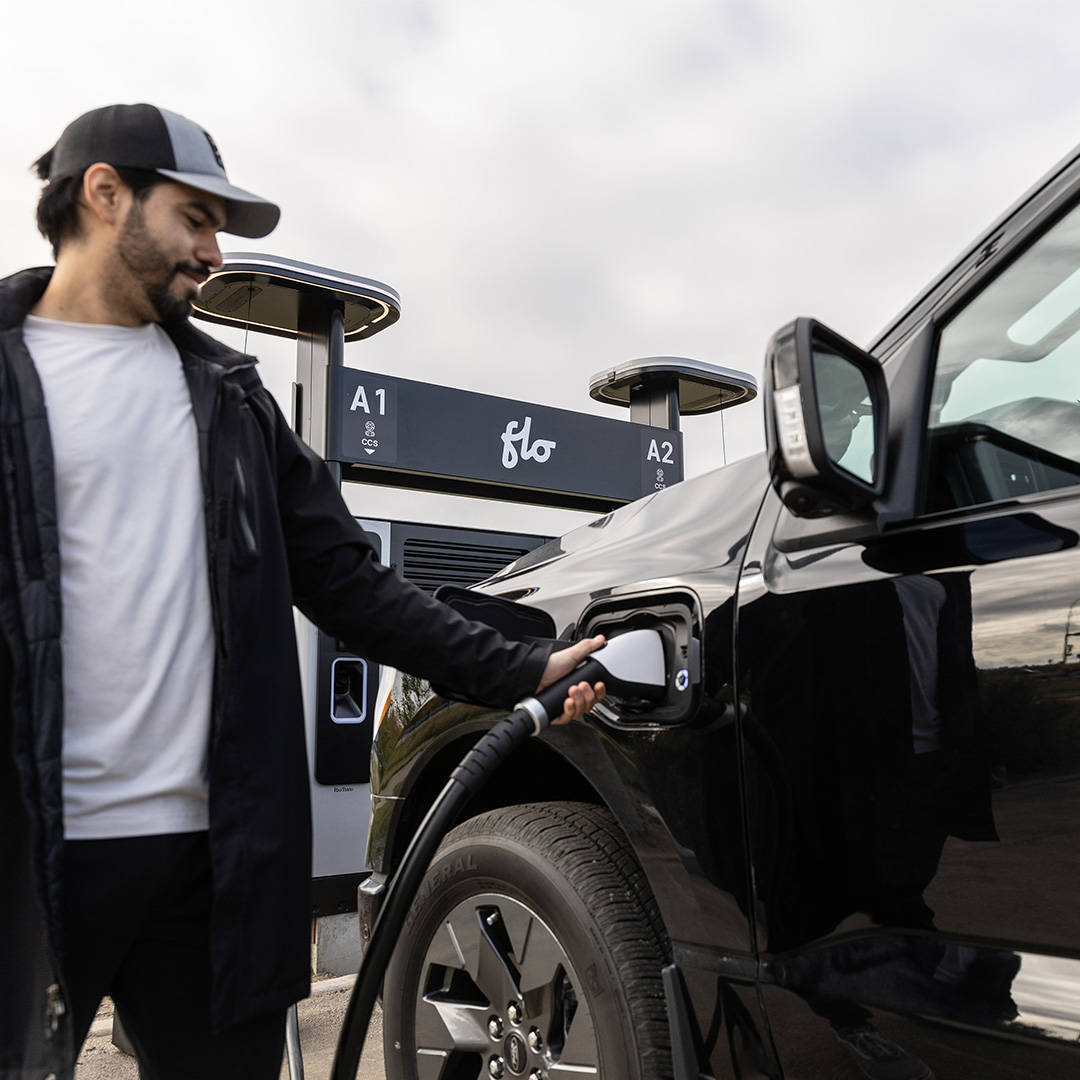EV Connectors: NACS adoption and the dynamic charging landscape
Technology that was once exclusive to Tesla is becoming available for others to use. In June 2023, major automakers like Ford and General Motors announced that their next-gen electric vehicles will be equipped with a NACS connector. The change is expected to roll out in 2025.
With Tesla accounting for 64% of all EVs in the US, NACS is already the most widely used connector. And with other automakers adopting it as their own, it’s difficult to imagine any other technology becoming the official standard. NACS does stand for North American Charging Standard, after all.
Until recently, CCS was on track to become the new standard for fast charging in North America, phasing out the Japanese CHAdeMO connector. But this new announcement has shaken up the future of the industry.
That being said, these changes have yet to come, meaning different connector types will continue to coexist for the foreseeable future. Here’s what you need to know about the connectors on the market today.
Will existing charging stations need to be replaced?
Until the NACS rollout happens – and, realistically, even after it’s complete – there will still be many drivers using CCS. Just like when CCS replaced CHAdeMO as the preferred fast charging standard, there will still be demand for stations that are compatible with CCS, J1772, and CHAdeMO protocols.
The industry is still figuring out how to integrate NACS into future car lineups, so for now, CCS is still the most common choice for public stations (aside from Tesla’s network). It’s worth noting that until official requirements for public funding programs are clarified, and until a large number of North American EVs are shipped with NACS, nothing is set in stone.
For site hosts and home charging station owners who want to future-proof their units, FLO will be offering upgrades to NACS connectors in the future. That way, you won’t need to replace your station outright. For more information, reach out to your FLO representative!
Now that that’s cleared up, let’s dive in.
Are car chargers universal for all EV models?
Let’s get the obvious out of the way: in order for your vehicle to be compatible with a charger, its port will need to accommodate the charger’s connector. Do all EVs use the same plug? No, not at the moment. Different parts of the world use different charging plug standards, but in North America, we’re lucky to already have a relatively universal system.
The J1772 is the most common type of connector used for Level 2 charging in North America. It’s a smaller, simpler connector that’s compatible with most EV models. CCS and CHAdeMO connectors, on the other hand, are primarily used for fast charging and NACS is a hybrid supporting both level 2 and DC fast charging.
Why do we need all the different EV charging connector types?
Different plugs are required for Level 2 and fast charging because they are designed to handle different amounts of power and voltage. Level 2 charging uses a lower voltage and current to charge the car’s battery over a longer period of time, while fast charging requires a much higher voltage and current to charge the battery quickly.
Read more: What does Level 1, 2 and 3 mean?
Level 2 charging stations (like your home charger or public curbside chargers) typically use a 240-volt alternating current (AC) power source, which is similar to many higher powered household appliances like dryers and ovens. How fast will your vehicle charge while plugged into a Level 2? That depends on the car’s onboard converter, which converts the AC power to direct current (DC) power and delivers it to the battery.
Alternating current level 2 charging
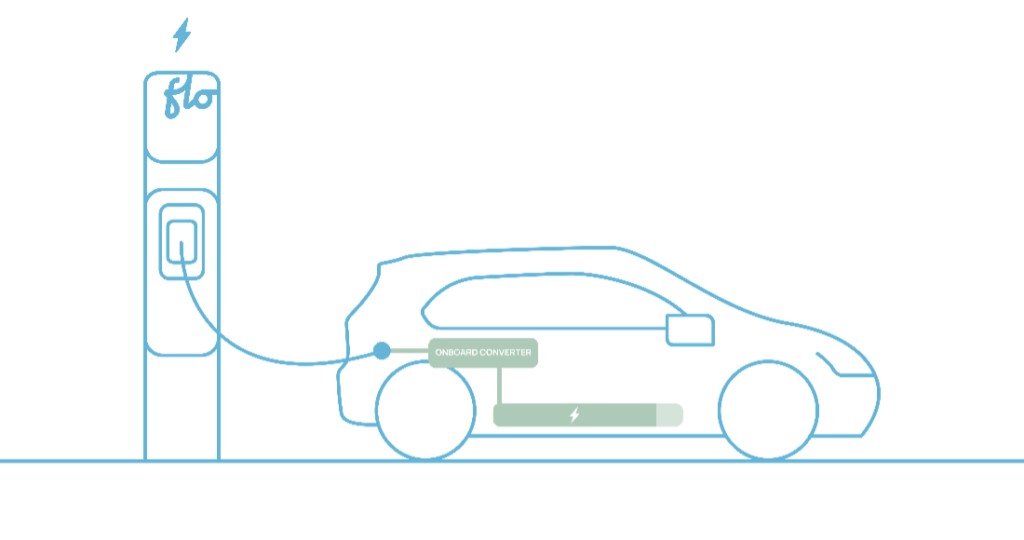
How a level 2 charging station charges a car with alternating current.
Fast charging, on the other hand, requires a much higher voltage and current to deliver a large amount of power to the battery in a short amount of time. DC fast chargers typically provide 400 volts or more, and common charging rates can range from 50 kW to 350 kW or more, depending on the charger and the car.
The NACS, CCS and CHAdeMO transfer high-powered DC current directly into the car’s battery without being converted through the onboard converter first.
Direct current fast charging
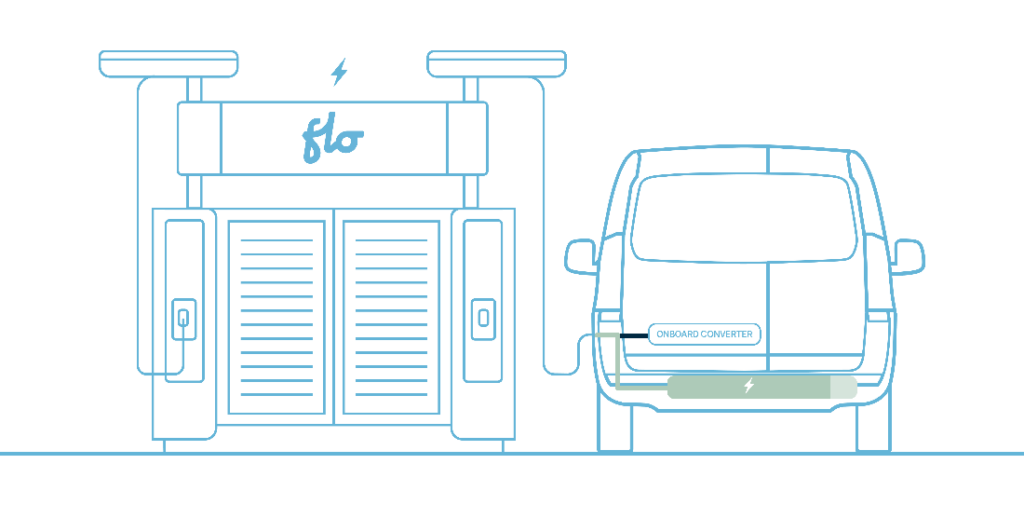
How a DC fast charging station charges a car with direct current.
You can think of charging an EV like filling up a pool. Level 2 charging is like using a garden hose to slowly fill up the pool over a few hours, and fast charging is like using a fire hydrant to fill it in a matter of minutes. More water pushed through a bigger pipe at a higher speed fills the pool faster – but the hose and connectors must be able to withstand that degree of power.
How to tell the difference between EV charging plugs
4 types of EV connectors in North America
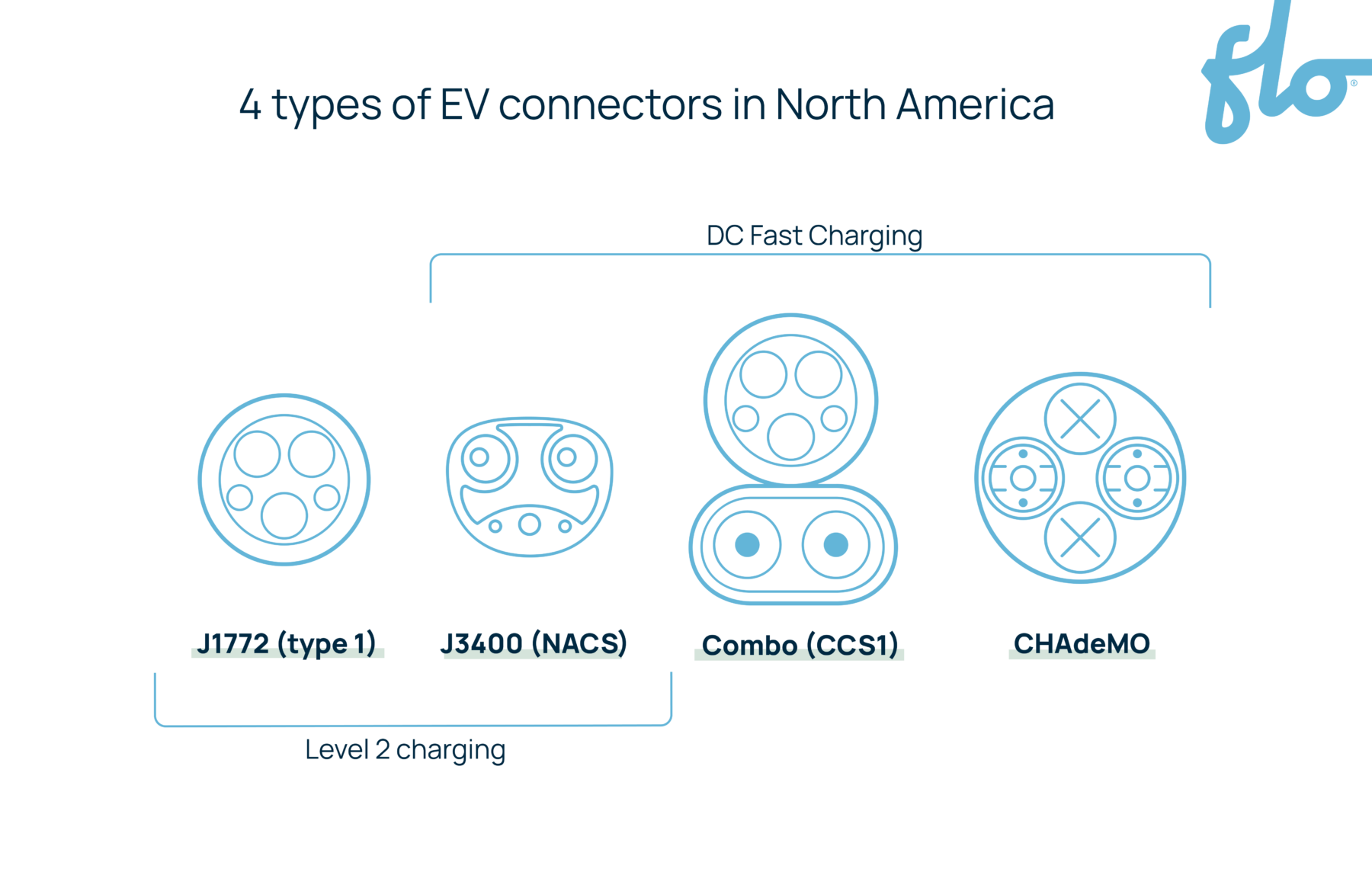
The 4 most common types of EV connectors in North America.
Level 2 EV charging plugs
You’ll find two types of Level 2 connector in North America. The J1772, which is used for both at-home and public charging, and NACS, which is an hybrid connector used for both fast charging and level 2 charging.
Fast charging plugs
There are currently three types of fast EV charging plugs in North America.
Combined Charging System (CCS)
The CCS Type 1 – AKA Combo 1 – is a charging standard that has become increasingly popular in North America over the past decade. It is a common connector in Canada and the United States, while Europe and most of the world uses a variant of the same system called CCS Type 2, similar but different form factor.
The CCS Type 1 plug is specifically designed to handle both AC charging (Level 1 and 2) and DC fast charging (Level 3). It gives EV owners the ability to charge their vehicle quickly and efficiently using a single plug, making it a convenient and versatile solution.
CCS Type 1 follows the same pattern as the J1772 connector used for Level 2 charging, with two additional pins located at the bottom of the connector to enable fast charging.
This means that a vehicle with a CCS Type 1 charging port will be compatible with Level 2 charging stations using J1772 and fast charging stations using CCS Type 1. During Level 2 charging, only the top half of the charging port is used.
North American Charging Standard (NACS)
If you’re not familiar with this charging standard, it may be because it underwent a recent rebranding. When Tesla made its charging technology available to other automakers in 2023, it was renamed the North American Charging Standard (NACS) and is now being standardized as SAE J3400.
NACS connectors employ the same communication protocol (PLC based DIN70121 & ISO15118) as CCS connectors. Additionally, it is capable of handling both alternating and direct currents using a single plug. The main difference is that CCS is considered a combined charger (uses one part of the plug for Level 2, and the entire plug for fast charging) while NACS is hybrid (same plug for both). CSS-NACS adapters are available on the market, enabling drivers to use a wider range of charging stations.
CHAdeMO
The CHAdeMO connector, originally designed by Japanese automakers, is used for DC fast charging. While it did eventually make its way to North America, it has declined in popularity over time (some countries even removed it from their list of connectors). Older EV models still feature a CHAdeMO charging port, as well as current models of the Nissan LEAF and Mitsubishi Outlander PHEV.
The most obvious way to identify a CHAdeMO port is having a J1772 port located next to it on your car: since CHAdeMO is not compatible with Level 2 charging, it must be accompanied by a dedicated Level 2 plug.
Even though this format is becoming less common, some networks still include these connectors on DC fast charging stations – including FLO. Our SmartDC units are equipped with both CCS1 and CHAdeMO plugs.
Read more: EV charging etiquette rules you must know
It’s exciting to see how much innovation is happening in the EV space – it’s in a constant cycle of evolution. We’ve seen different standards go head-to-head for market dominance, and the industry is still figuring out which technology will reign victorious. No matter who ends up on top, we’ll be ready with solutions that suit drivers’ needs.
If you want to make absolutely sure that your plug is compatible with the nearest charging station, the FLO app has you covered at all times. Each station description lists the connectors available on-site, taking the guesswork out of on-the-go charging.

